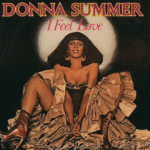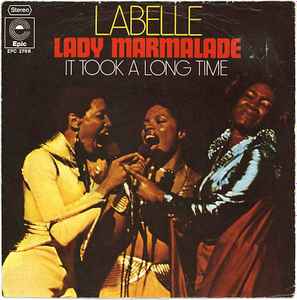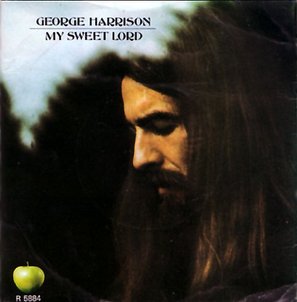 Donna Summer’s “I Feel Love” is more than a song—it is a cultural milestone, a sonic revolution, and the track that reshaped the landscape of dance music forever. Released in 1977 on her album I Remember Yesterday, the song marked a turning point not just for disco, but for electronic music as a whole. Its hypnotic beat, ethereal vocals, and pioneering use of synthesizers created an entirely new sound that would influence genres ranging from techno to house to pop for decades to come.
Donna Summer’s “I Feel Love” is more than a song—it is a cultural milestone, a sonic revolution, and the track that reshaped the landscape of dance music forever. Released in 1977 on her album I Remember Yesterday, the song marked a turning point not just for disco, but for electronic music as a whole. Its hypnotic beat, ethereal vocals, and pioneering use of synthesizers created an entirely new sound that would influence genres ranging from techno to house to pop for decades to come.
At its core, “I Feel Love” represents a perfect storm of innovation: the visionary production of Giorgio Moroder, the crisp and futuristic sounds of the Moog synthesizer, and Donna Summer’s transcendent voice coming together to create something unprecedented. The track wasn’t just about disco euphoria—it was about creating a hypnotic, mechanical pulse that made the human body move in ways previously unseen on the dance floor.
The Cultural and Musical Context of 1977
By the late 1970s, disco had become a dominant force in popular music. Clubs like Studio 54 in New York City were not just nightspots—they were cultural phenomena, gathering places for a generation eager to express themselves through dance, fashion, and liberation. Disco’s signature elements included four-on-the-floor beats, lush orchestration, and infectious grooves that encouraged extended dancing.
Yet by 1977, many disco tracks still relied on traditional instrumentation, blending live bass, drums, strings, and horns. Donna Summer’s I Feel Love broke away from this template entirely. Giorgio Moroder, the song’s producer, along with engineer Pete Bellotte, embraced a purely electronic approach. Synthesizers replaced traditional instrumentation, creating a futuristic soundscape that felt mechanical yet irresistibly human. This innovation wasn’t just musical experimentation—it was a bold statement that electronic music could dominate dance floors and charts alike.
Writing and Production: Giorgio Moroder’s Vision
The genius of “I Feel Love” lies largely in Giorgio Moroder’s vision. Moroder, an Italian producer and composer, had been experimenting with synthesizers throughout the 1970s, but this track represented his most ambitious work. Using a Moog synthesizer, Moroder created a continuously evolving sequence of arpeggios, constructing a rhythm that was hypnotic, relentless, and mesmerizing.
The production process was painstaking. Every element—bassline, melody, percussion, and effects—was sequenced on analog synthesizers. Unlike live instrumentation, these machines required precise programming, with timing, pitch, and modulation carefully calibrated. The result was a mechanical, perfectly timed pulse that was revolutionary for 1977. It sounded like the future, and in many ways, it predicted the rise of electronic dance music that would dominate clubs in the decades to follow.
Pete Bellotte, co-producer and collaborator with Moroder, played an essential role in shaping the track’s structure. Bellotte emphasized Summer’s vocal performance, ensuring her voice floated above the synthetic landscape without being overpowered. The combination of Donna Summer’s warm, sultry delivery with the cold, hypnotic pulse of the synthesizer created a tension that made the track both human and otherworldly.
Donna Summer’s Vocals: Humanizing the Machine
Donna Summer’s contribution to I Feel Love cannot be overstated. Her voice serves as the emotional anchor amid the mechanical precision of the Moog. Summer’s delivery is ethereal yet grounded, sensual yet precise, providing a warmth that contrasts with the cool, electronic backdrop. Her performance embodies a paradox: she is both a participant in the futuristic soundscape and the human heart that keeps the track alive.
Summer’s phrasing is hypnotic, her vocal lines overlapping with the synthesizer’s arpeggios in a way that enhances the song’s trance-like quality. She never overpowers the beat; instead, her voice weaves seamlessly into the electronic texture. This careful balance between human expression and mechanical perfection set a precedent for countless electronic tracks in the decades that followed.
Musical Innovation: The Pulse of the Future
At the time of its release, I Feel Love was unprecedented in pop music. The entire track relied on synthesizers, drum machines, and sequencers—a stark departure from the orchestral arrangements common in disco. Moroder’s use of arpeggiated synthesizers created a hypnotic, looping pattern that felt infinite. The bassline pulsed relentlessly, providing a foundation that was both danceable and mesmerizing.
The track’s tempo, rhythm, and texture combined to create a physical effect on listeners. Clubgoers reported feeling entranced, their movements dictated by the mechanical precision of the sequenced synthesizers. In essence, I Feel Love was designed not just to be heard, but to be felt. It was music engineered for the body as much as the mind.
This approach would influence genres far beyond disco. House, techno, trance, and electronic pop all owe a debt to Moroder’s innovations on I Feel Love. Artists like Daft Punk, Madonna, and Kylie Minogue drew inspiration directly from the track’s electronic pulse, and it remains a touchstone for producers seeking to merge human emotion with synthetic soundscapes.
Lyrics and Emotional Resonance
Lyrically, I Feel Love is deceptively simple. The song’s repetitive phrases—“I feel love, I feel love, I feel love”—create a hypnotic mantra, reinforcing the track’s trance-like quality. The lyrics evoke desire, connection, and euphoria, aligning perfectly with the pulsating rhythm and futuristic sound.
The simplicity of the lyrics is deliberate. By repeating key phrases, the song mirrors the cyclical nature of the synthesizer patterns, reinforcing the sense of continuity and immersion. The emotional impact lies not in complexity, but in consistency—the listener is drawn into a shared experience of ecstatic motion, surrendering to the pulse of the track.
Summer’s delivery adds layers of emotional nuance. Subtle inflections, breath control, and harmonic shifts imbue the mantra-like lyrics with sensuality and warmth, transforming repetition into a vehicle for emotional depth. The result is a song that is both hypnotic and emotionally engaging—a rare feat in electronic music of the era.
Chart Performance and Reception
Upon release, I Feel Love achieved both critical acclaim and commercial success. It topped the charts in the United Kingdom and performed strongly in other European markets, cementing Summer’s status as the Queen of Disco. In the United States, the track became a club anthem, dominating dance floors even if mainstream radio was initially cautious of its unconventional electronic sound.
Critics praised the track for its innovation. Rolling Stone highlighted its futuristic production, calling it “a record from another planet,” while musicologists noted its role in bridging disco with emerging electronic music forms. The song’s impact was immediate, but its influence would only grow over time, shaping the direction of dance music for decades.
Influence on Future Genres
The legacy of I Feel Love is immeasurable. Its use of sequenced synthesizers paved the way for electronic dance music, influencing house, techno, trance, and synth-pop. Artists such as New Order, Depeche Mode, and Daft Punk have cited the track as a pivotal inspiration, acknowledging its role in redefining the possibilities of electronic sound.
In addition to its influence on electronic music, I Feel Love reshaped disco itself. Producers recognized the potential of synthesizers to create hypnotic, club-oriented tracks, leading to a wave of electronic disco hits in the late 1970s and early 1980s. The song demonstrated that technology could enhance, rather than replace, human expression, a lesson that continues to resonate in contemporary music production.
Music Video and Visual Impact
Although the era of MTV was still a few years away, I Feel Love’s promotional video and live performances amplified its futuristic aura. Donna Summer’s styling, featuring metallic costumes and shimmering fabrics, visually reinforced the track’s otherworldly sound. The combination of electronic pulse and visual presentation created a holistic sensory experience, anticipating the integration of music and image that would become central to pop and dance music in the 1980s.
Critical Analysis: A Revolutionary Track
Music scholars have long recognized I Feel Love as revolutionary. Its innovations extend beyond technology to encompass arrangement, emotional delivery, and audience impact. Moroder’s sequencing techniques introduced a level of precision previously unheard in popular music, while Summer’s performance demonstrated the enduring power of human expression within a mechanized soundscape.
The track’s hypnotic quality is worth noting in a musical context. Its arpeggiated synthesizers create patterns that induce a trance-like state, a phenomenon later explored in electronic dance subgenres such as trance and minimal techno. By merging emotional immediacy with mechanical repetition, I Feel Love established principles that would guide electronic music production for decades.
Cultural Legacy
Over forty years after its release, I Feel Love remains a cultural touchstone. It has been sampled, remixed, and celebrated across generations, appearing in films, advertisements, and countless DJ sets. Its influence is evident not just in electronic music but in the broader pop landscape, demonstrating the track’s enduring relevance.
The song also solidified Donna Summer’s status as a trailblazer. She was not merely a disco performer; she was a visionary artist capable of shaping the sound of a genre and influencing the trajectory of popular music. Her collaboration with Giorgio Moroder set a benchmark for artist-producer partnerships, showing how synergy between voice and technology could create something timeless.
Conclusion: A Timeless Pulse
I Feel Love is more than a disco track; it is a masterclass in innovation, emotion, and rhythm. Donna Summer’s voice, soaring above Giorgio Moroder’s sequenced synthesizers, created a sonic experience that transcended the dance floor, shaping the course of electronic music for decades. Its hypnotic pulse, emotional depth, and technological sophistication set it apart as one of the most important songs in modern music history.
The track demonstrates the power of collaboration, the potential of technology, and the enduring influence of visionary artistry. It showed that electronic music could evoke passion, transcend the temporal, and create a timeless connection between body, mind, and rhythm.
By bridging human warmth and machine precision, I Feel Love not only defined an era—it established a blueprint for the future. Its legacy continues to reverberate in the sounds of contemporary dance music, proving that a single song can indeed change the course of musical history.
From the pulsating arpeggios to Donna Summer’s ethereal delivery, I Feel Love remains a testament to innovation, creativity, and the enduring power of rhythm. It is not just a song—it is an experience, an enduring pulse that continues to move hearts and feet across generations.


